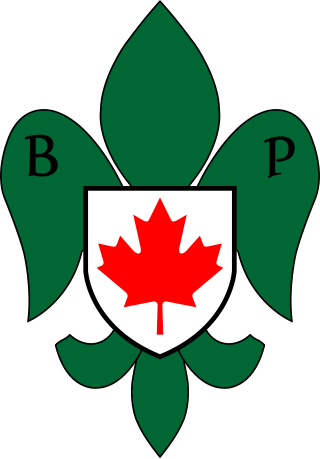
Scouting, also known as the Scout Movement, is a worldwide youth movement employing the Scout method, a program of informal education with an emphasis on practical outdoor activities, including camping, woodcraft, aquatics, hiking, backpacking, and sports. Another widely recognized movement characteristic is the Scout uniform, by intent hiding all differences of social standing in a country and encouraging equality, with neckerchief and campaign hat or comparable headwear. Distinctive uniform insignia include the fleur-de-lis and the trefoil, as well as merit badges and other patches.

A Scout is a child, usually 10–18 years of age, participating in the worldwide Scouting movement. Because of the large age and development span, many Scouting associations have split this age group into a junior and a senior section. Scouts are organized into troops averaging 20–30 Scouts under the guidance of one or more Scout Leaders or Scoutmasters. Troops subdivide into patrols of about 6–8 Scouts and engage in outdoor and special interest activities. Troops may affiliate with local, national, and international organizations. Some national Scouting associations have special interest programs such as Air Scouts, Sea Scouts, outdoor high adventure, Scouting bands, and rider Scouts.

The Baden-Powell Scouts' Association (B-PSA) is a worldwide youth organisation originating in the United Kingdom, with friendly relationships with similar traditional scouting organisations in various countries. Baden-Powell Scouting focuses on the importance of tradition in the scout movement.

Cub Scouts, Cubs or Wolf Cubs are programs associated with Scouting for young children usually between 7 and 12, depending on the organization to which they belong. A participant in the program is called a Cub. A group of Cubs is called a 'Pack'.

A campaign hat, sometimes called campaign cover, is a broad-brimmed felt or straw hat, with a high crown, pinched symmetrically at the four corners. The campaign hat is occasionally referred to as a Stetson, derived from its origin in the company's Boss of the Plains model in the late 19th century.

Rover Scouts, Rovers, Rover Scouting or Rovering is a program associated with some Scouting organizations for adult men and women. A group of Rovers is called a 'Rover Crew'.

The Scout Association of Zimbabwe is a member of the World Organization of the Scout Movement. Scouting in Zimbabwe shares history with Malaŵi and Zambia, with which it was linked for decades.

The Order of World Scouts (OWS), founded in 1911, is the oldest international Scouting organisation. It is headquartered in England, with the administration headquarters in Italy.

The Kenya Scouts Association is the national Scouting association of Kenya. Scouting was founded in British East Africa in 1910 and became a member of the World Organization of the Scout Movement in 1964. It has 323,929 members.
Scoutcraft is a term used to cover a variety of woodcraft knowledge and skills required by people seeking to venture into wild country and sustain themselves independently. The term has been adopted by Scouting organizations to reflect skills and knowledge which are felt to be a core part of the various programs, alongside community and spirituality. Skills commonly included are camping, cooking, first aid, wilderness survival, orienteering and pioneering.

The Scout method is the informal educational system used in the Scouting Movement. The aim of Scouting is character training with the goal of helping participants become independent and helpful, and thereby become "healthy, happy, helpful citizens".
Beavers is a programme associated with some Scouting organizations generally for children aged 6 to 8 who are too young for the Cub programme.

The Pathfinder & Rover Explorer Scouts' Association (P-RESA) is an independent Traditional Scouting Association in the United Kingdom, with International branches. The Association's training programme runs along the lines of Baden-Powell's original Scouting for Boys, upholding the traditions and practices set out by B-P, using the 1938 Boy Scouts' Association Policy Organisation & Rules (POR) as its basis.

The Boy Scouts of America (BSA) was inspired by and modeled on The Boy Scouts Association, established by Robert Baden-Powell in Britain in 1908. In the early 1900s, several youth organizations were active, and many became part of the BSA.
Non-aligned Scouting organizations is a term used by the World Organization of the Scout Movement (WOSM), World Association of Girl Guides and Girl Scouts (WAGGGS) and their member national organizations to refer to Scouting organizations that are not affiliated with them. See List of non-aligned Scouting organizations.
The Scout and Guide movement in Jamaica is served by

The Baden-Powell Award, also known as the B-P Award or Baden-Powell Scout Award (BPSA), is the highest award achievable to Rover (adult) Scouts.

The British Boy Scouts and British Girl Scouts Association is an early scouting organisation, having begun as the Battersea Boy Scouts in 1908. The organisation was renamed as the British Boy Scouts and launched as a national organisation on 24 May 1909. In association with other Scout organisations, the BBS formed the National Peace Scouts in 1910. The BBS instigated the first international Scouting organisation, the Order of World Scouts in 1911.

The BPSA in Canada was established in Victoria, British Columbia in 1996 as The Baden-Powell Scouts' Association of Canada (B-PSAC), rejecting the perceived modernization of the Scout method by Scouts Canada and sharing its aims with the other branches of the B-PSA. It is affiliated with the World Federation of Independent Scouts. The association was incorporated in British Columbia in 2000.

The Outdoor Service Guides (OSG) is an inclusive, co-ed scouting organization in the United States. It accepts scouts without regard to gender, gender identity, race, sexual orientation, economic circumstances, religion, or other differentiating factors. OSG is a member of the World Federation of Independent Scouts (WFIS).















